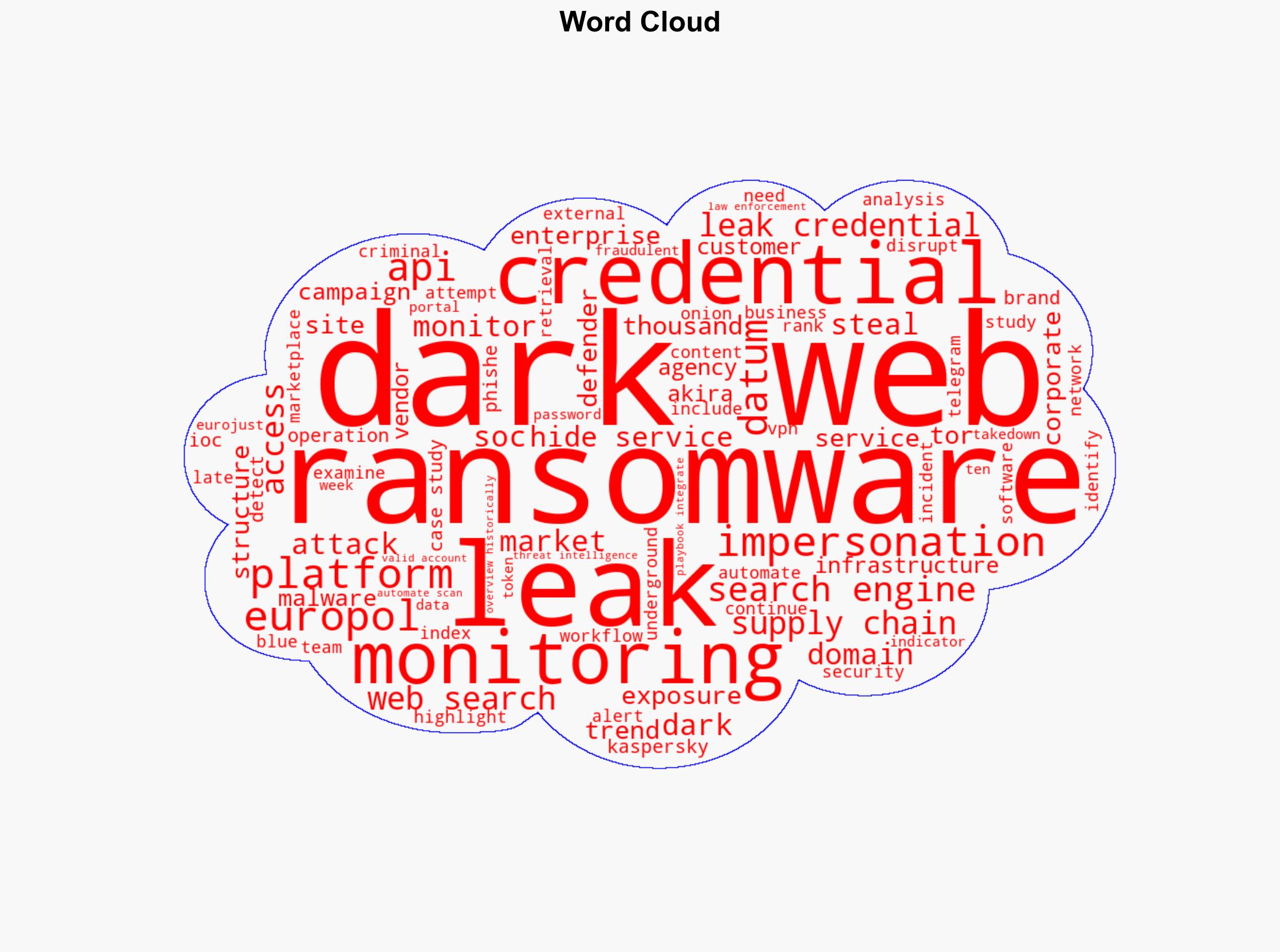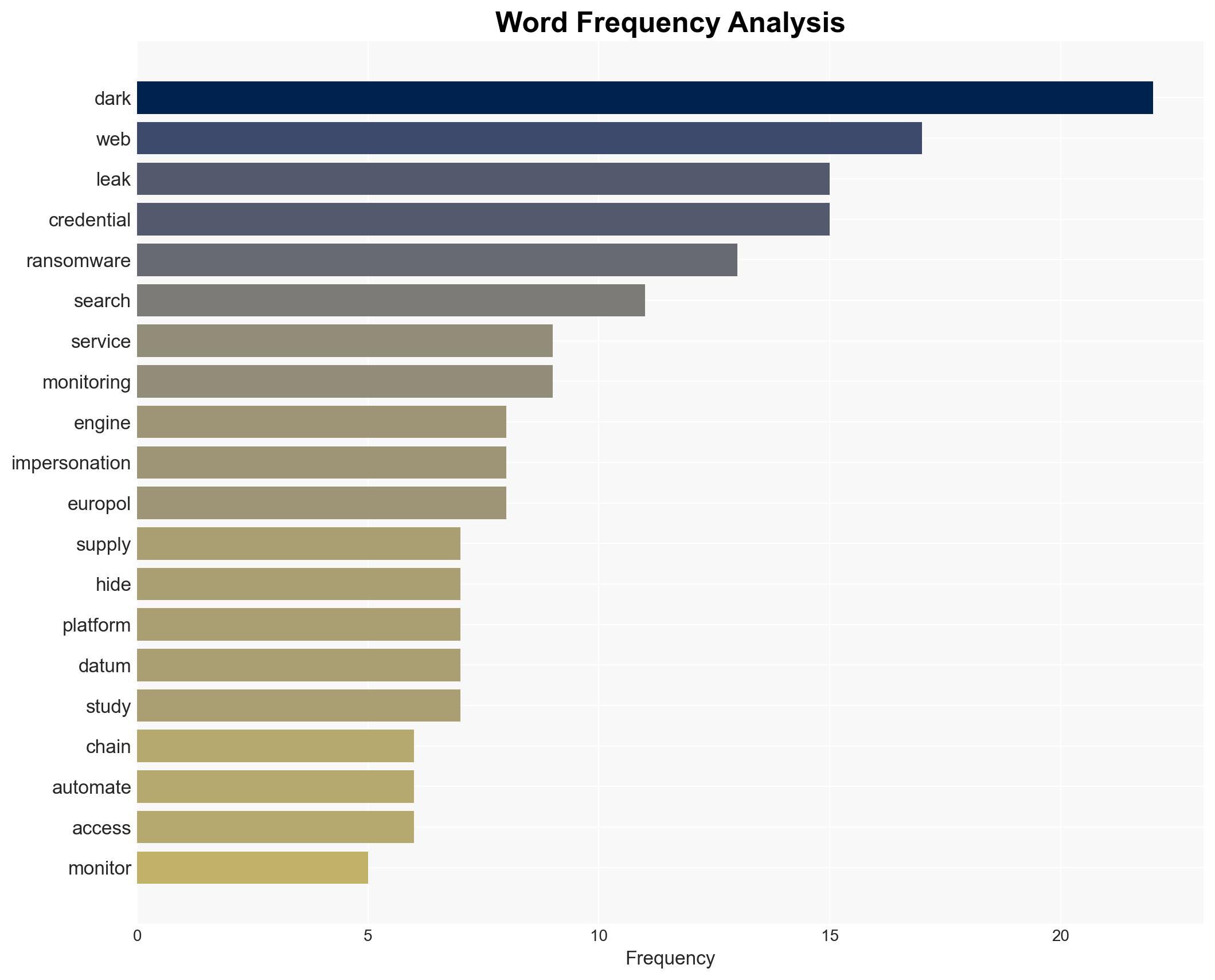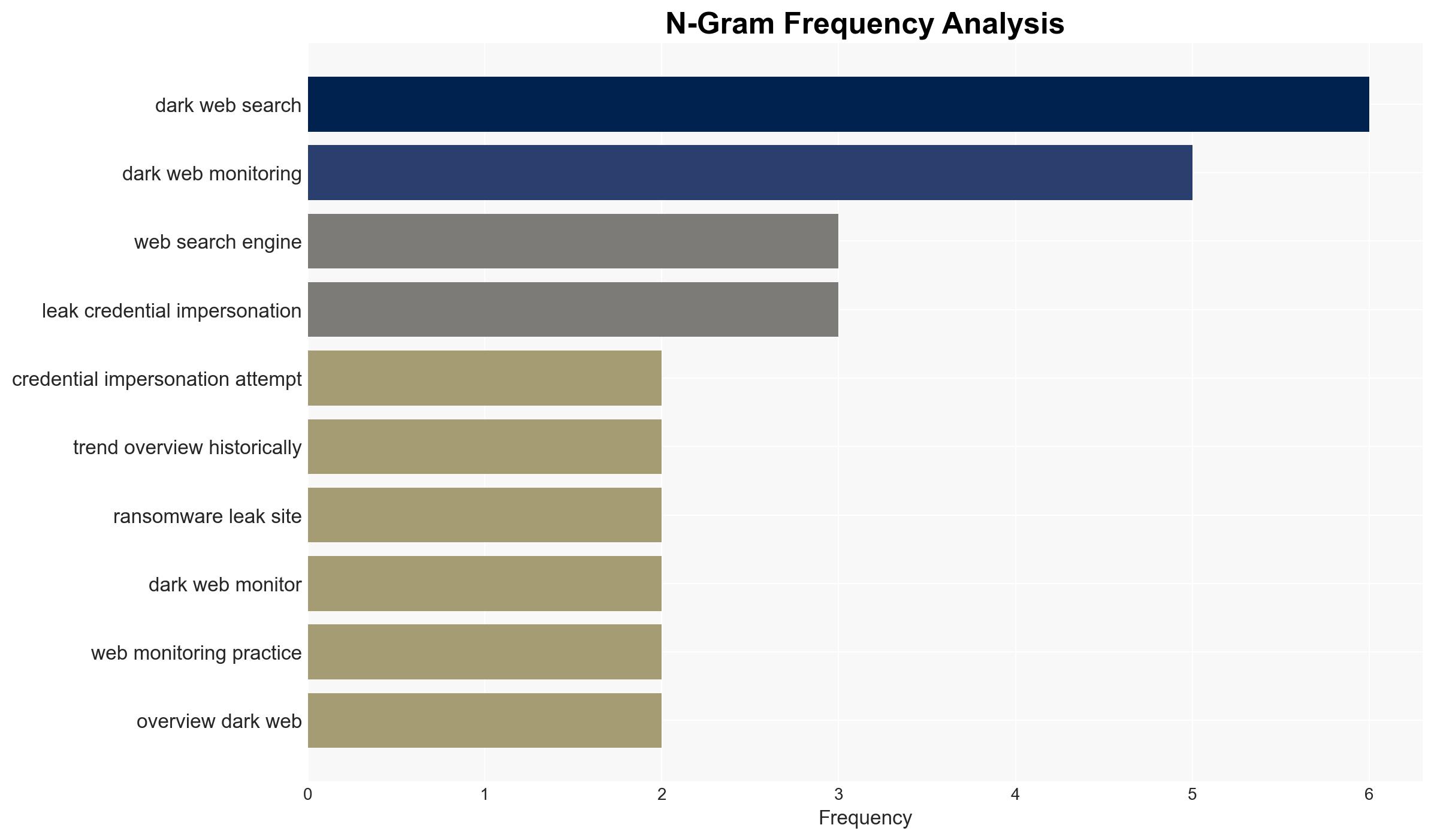Dark Web Search Engines in 2025 Enterprise Monitoring APIs and IOC Hunting – Darknet.org.uk
Published on: 2025-11-19
AI-powered OSINT brief from verified open sources. Automated NLP signal extraction with human verification. See our Methodology and Why WorldWideWatchers.
Intelligence Report:
1. BLUF (Bottom Line Up Front)
With a medium to high confidence level, the most supported hypothesis is that the evolution of dark web search engines into enterprise-grade monitoring platforms will significantly enhance organizations’ ability to preemptively identify and mitigate cyber threats. Strategic action should focus on integrating these platforms into existing security operations centers (SOCs) to bolster threat intelligence capabilities.
2. Competing Hypotheses
Hypothesis 1: The development of advanced dark web search engines will lead to improved threat intelligence and proactive defense mechanisms for enterprises.
Hypothesis 2: Despite advancements, dark web search engines will remain limited in effectiveness due to inherent challenges in indexing and data quality, leading to continued vulnerabilities in enterprise security.
Hypothesis 1 is more likely due to the structured APIs and automated alerting pipelines that align with SOC workflows, enhancing the ability to detect and respond to threats. However, ongoing challenges in data quality and indexing suggest that Hypothesis 2 cannot be entirely dismissed.
3. Key Assumptions and Red Flags
Assumptions: It is assumed that enterprises will effectively integrate these platforms into their existing security frameworks and that the platforms will maintain consistent data quality and indexing capabilities.
Red Flags: Potential over-reliance on automated systems without human oversight could lead to missed threats. Additionally, the volatility and unpredictability of dark web content may undermine the reliability of these platforms.
4. Implications and Strategic Risks
The integration of dark web search engines into enterprise security could lead to a significant reduction in successful cyberattacks, particularly those involving credential leaks and ransomware. However, the industrialization of the underground economy and the automation of cyber tools pose ongoing risks. A failure to address these could lead to increased sophistication of cyber threats, escalating economic and informational risks for businesses.
5. Recommendations and Outlook
- Integrate dark web monitoring platforms into SOCs to enhance threat detection and response capabilities.
- Maintain a balance between automated systems and human oversight to ensure comprehensive threat analysis.
- Continuously evaluate and update indexing and data retrieval strategies to mitigate data quality issues.
- Best-case scenario: Enterprises achieve significant reductions in cyber incidents through enhanced monitoring and proactive threat mitigation.
- Worst-case scenario: Dark web monitoring platforms fail to deliver reliable data, leading to undetected vulnerabilities and increased cyberattacks.
- Most-likely scenario: Incremental improvements in threat intelligence and incident response, with ongoing challenges in data quality and indexing.
6. Key Individuals and Entities
No specific individuals are mentioned in the source text. Key entities include enterprise security teams, dark web search engine developers, and cybersecurity infrastructure providers.
7. Thematic Tags
Structured Analytic Techniques Applied
- Adversarial Threat Simulation: Model and simulate actions of cyber adversaries to anticipate vulnerabilities and improve resilience.
- Indicators Development: Detect and monitor behavioral or technical anomalies across systems for early threat detection.
- Bayesian Scenario Modeling: Quantify uncertainty and predict cyberattack pathways using probabilistic inference.
- Network Influence Mapping: Map influence relationships to assess actor impact.
Explore more:
Cybersecurity Briefs ·
Daily Summary ·
Support us





